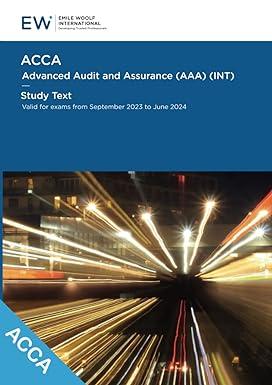
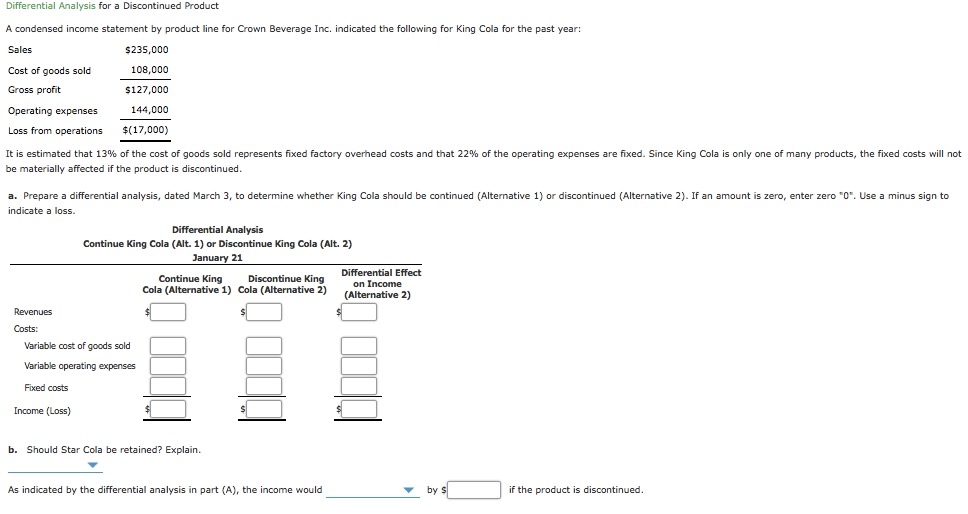
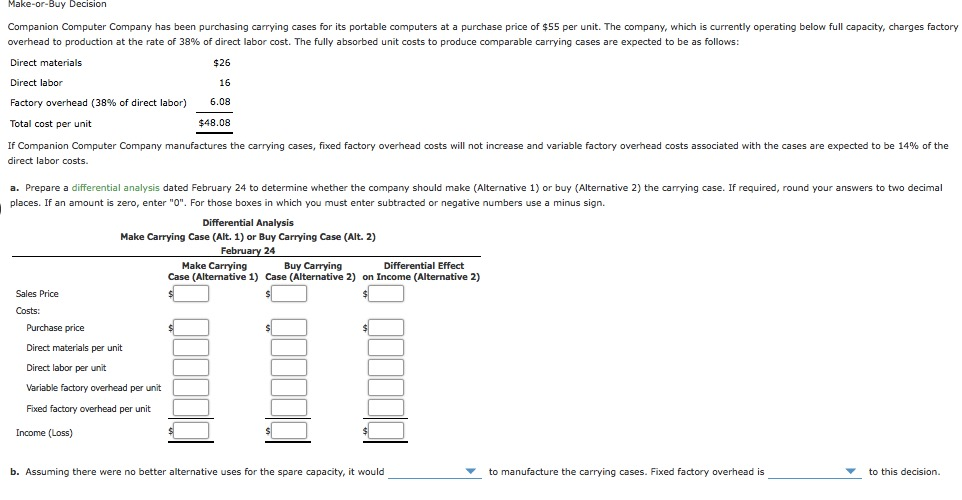
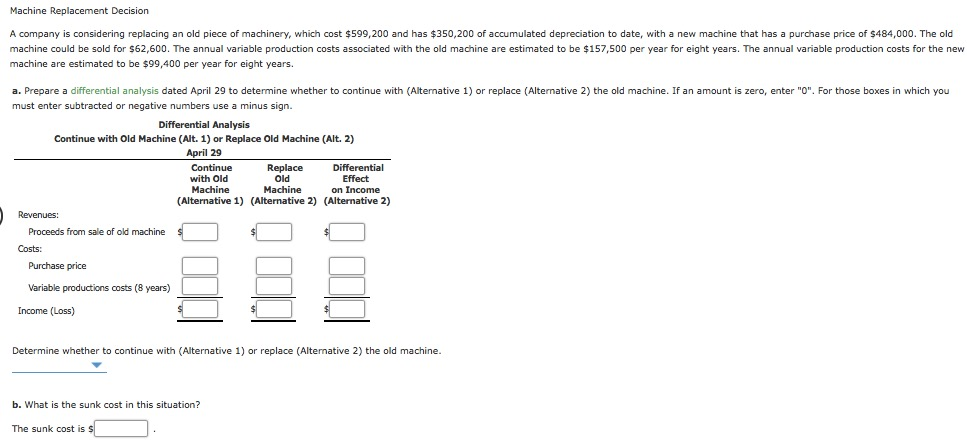

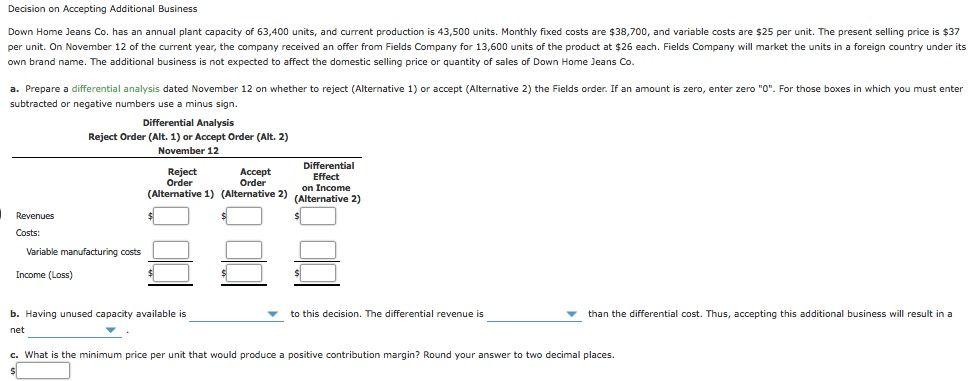
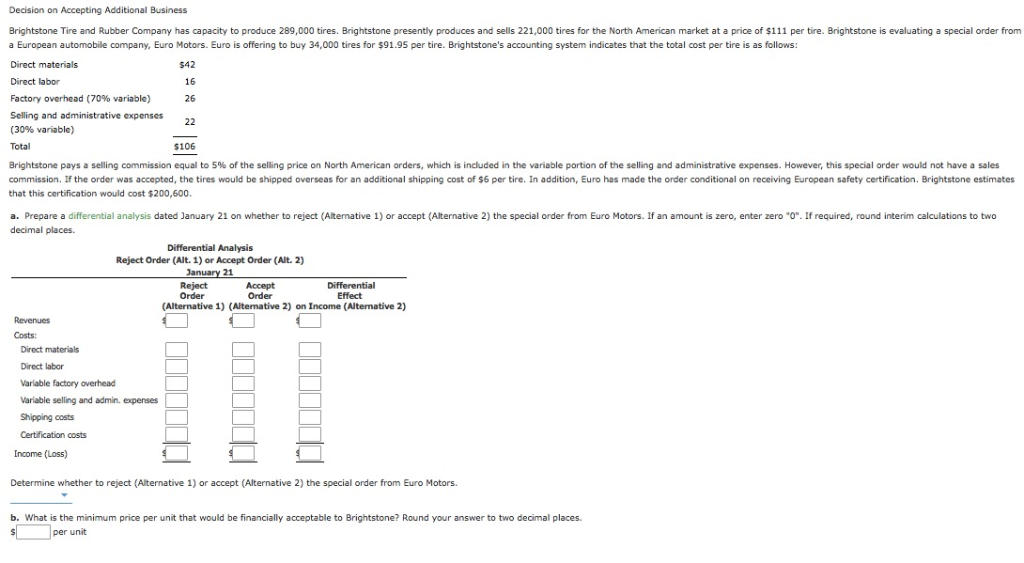 thank you so much!!!!
thank you so much!!!!
Differential Analvsis for a Lease-or-Sell Decision $121.400) for $274,000, less a 5 % brokerage commission. Inman Construction Company is considering selling excess machinery with a book value $279,300 (original cost of $400,700 less accumulated depreciation Alternatively, the machinery can be leased to another company for $283,300 for five years, after which it is expected to have no residual value. During the period of the lease, Inman Construction Company's costs of total repairs, insurance, and property tax expenses are expected be $24,800. a. Prepare a differential analysis, dated May to determine whether Inman should lease (Alternative 1) or sell (Alternative 2) the machinery. For those boxes in which you must enter subtracted negative numbers use a minus sign. Differential Analysis Lease Machinery (Alt. 1) or Sell Machinery (Alt. 2) May 25 Differential Effect Lease Machinery (Alternative 1) Sell Machinery (Alternative 2) (Alternative 2) Revenues Costs Income (Loss) S b. On the basis of the data presented, would it be advisable to lease or sell the machinery? Explain. from selling is $ The net Differential Analysis for Discontinued Product A condensed income statement by product line for Crown Beverage Inc. indicated the following for King Cola for the past year: $235,000 Sales 108,000 Cost goods sold Gross profit $127,000 Operating expenses 144,000 $(17,000) Loss from operations It is estimated that 13% of the cost of goods sold represents fixed factory overhead costs and that 22% of the operating expenses are fixed. Since King Cola is only one of many products, the fixed costs will not be materially affected if the product is discontinued. a. Prepare a differential analysis, dated March indicate a loss. , to determine whether King Cola should be continued (Alternative 1) or discontinued (Alternative 2). If an amount is zero, enter zero "0. Use a minus sign to Differential Analysis Continue King Cola (Alt. 1) or Discontinue King Cola (Alt. 2) January 21 Differential Effect on Tocome Discontinue King Continue King Cola (Alternative 1) Cola (Alternative 2) (Alternative 2) Revenues Costs: Variable cost of goods sold Variable operating expenses Fixed costs Income (Loss) b. Should Star Cola be retained? Explain. As indicated by the differential analysis in part (A), the income would by $ if the product discontinued. Make-or-Buy Decision Companion Computer Company has been purchasing carrying cases for ts portable computers at a purchase price of $55 per unit. The company, which currently operating below full capacity, charges factory overhead to production at the rate of 38% of direct labor cost. The fully absorbed unit costs to produce comparable carrying cases are expected t be as follows: Direct materials $26 Direct labor 16 Factory overhead (38 % of direct labor) 6.08 Total cost per unit $48.08 If Companion Computer Company manufactures the carrying cases, fixed factory overhead costs will not increase and variable factory overhead costs associated with the cases are expected o be 14% of the direct bor costs. a. Prepare a differential analysis dated February 24 to determine whether the company should make (Alternative 1) or buy (Alternative 2) the carrying case. If required, round your answers to two decimal places. If an amount is zero, enter "0". For those boxes in which you must enter subtracted or negative numbers use a minus sign. Differential Analysis Make Carrving Case (Alt. 1) or Buy Carrying Case (Alt. 2) February 24 Make Carrying Buy Carrying Case (Alternative 1) Case (Alternative 2) on Income (Alternative 2) Differential Effect Sales Price Costs Purchase price Direct materials per unit Direct labor per unit Variable factory overhead per unit Fixed factory overhead per unit Income (Loss) to this decision. b. Assuming there were no better alternative uses for the spare capacity, it would to manufacture the carrying cases. Fixed factory overhead is Machine Replacement Decision A company is considering replacing an old piece of machinery, which cost $599,200 and has $350.200 of accumulated depreciation to te, with a new machine that has a purchase price of $484,000. The old eight years. The annual variable production costs for the new old machine are estimated to be $157,500 per year machine inated to be $99.400 per vear for a uction costs associated with t years a. Prepare a differential analysis dated April 29 to determine whether to continue with (Alternative 1) replace (Alternative 2) the old machine. If amount is zero, enter "0". For those boxes in which you must enter subtracted or negative numbers use a minus sign. Differential Analysis Continue with Old Machine (Alt. 1) or Replace Old Machine (Alt. 2) April 29 Continue Replace Differential Machine Machine on Income (Alternative 1) (Alternative 2) (Alternative 2) Revenues: Proceeds from sale of old machine Costs: Purchase price Variable productions costs (8 years) Income (Loss) Determine whether to continue with (Alternative 1) or replace (Alternative 2) the old machine. b. What is the sunk cost in this situation? The sunk cost is s Mo Sell or Process Further to produce a "finished cut" at a total. Bunyon Lumber Company incurs a cost of $382 per hundred board feet (hbf) processing certain "rough-cut" lumber, which it sells for $540 per hbf. An alternative processing cost of $525 per hbf, which can be sold for $768 per hbf. Prepare a differential analysis dated August 9 on whether to sell rough-cut lumber (Alternative 1) or process further into finished-cut lumber (Alternative 2). For those boxes in which you must enter subtracted or negative numbers use a minus sign. Differential Analysis Sell Rough-Cut (Alt. 1) or Process Further into Finished Cut (Alt. 2) August 9 Di tial Further into Sell Effect Finished Cut on Income (Alternative 1 (Alternative 2) (Alternative 2) Revenues, per 100 board ft. Costs, per 100 board ft. Income (Loss), per 100 board ft. r process further into finished-cut lumber (Alternative 2) Determine whether to sell rough-cut lumber (Alternative 1) Decision on Accepting Additional Business Down Home Jeans Co. has an annual plant capacity of 63,400 units, and current production is 43,500 units. Monthly fixed costs are $38,700, and variable costs are $25 per unit. The present selling price is $37 per unit. On November 12 of the current year, the company received an offer from Fields Company for 13,600 units of the product at $26 each. Fields Company will market the units a foreign country under its own brand name. The additional business is not expected to affect the domestic selling price or quantity sales of Down Home Jeans Co. reject (Alternative 1) or accept (Alternative 2) the Fields order a. Prepare a differential analysis dated November 12 on whether an amount is zero, enter zero "0". For those boxes in which you must enter subtracted or negative numbers use a minus sign. Differential Analysis Reject Order (Alt. 1) or Accept Order (Alt. 2) November 12 Dif tial Fffect Reject Order Accept Order on Income tive 2) (Alternative 2) (Alter 1) (Alt Revenues Costs: Variable manufacturing costs Income (Loss) to this decision. The differential revenue is b. Having unused capacity available is than the differential cost. Thus, accepting this additional business will result in a net two decimal places. c. What is the minimum price per unit that would produce a positive contribution margin? Round your answer Decision on Accepting Additional Business Brightstone Tire and Rubber Company has capacity to produce 289,000 tires. Brightstone presently produces and sells 221,000 tires for the North American market at a price of $111 per tire. Brightstone is evaluating a special order from a European automobile company, Euro Motors. Euro is offering to buy 34,000 tires for $91.95 per tire. Brightstone's accounting system indicates that the total cost per tire is as follows: Direct materials t47 Direct labor 16 Factory overhead (70 % variable) 26 Selling and administrative expenses 22 (30% variable) Total $106 Brightstone pays a selling commission equal to 5% of the selling price on North American orders, which is included in the variable portion of the selling and administrative expenses. However, this special order would not have a sales commission. If the order was accepted, the tires would be shipped overseas for nadditional shipping cost of $6 per tire. In addition, Euro has made the order conditional on receiving European safety certification. Brightstone estimates that this certification would cost $200,600. a. Prepare a differential analysis dated January 21 on whether to reject (Altermative 1) or accept (Alternative 2) the special order from Euro Motors. If an amount is zero, enter zero "0". If required, round interim calculations to two- decimal places. Differential Analysis Reject Order (Alt. 1) or Accept Order (Alt. 2) ary 21 Reiect Accept Order Differential Effect Order (Alternative 1) (Alternative 2) on Income (Altemative 2) Revenues Costs Direct materials Direct labor Variable factory overhead Variable selling and admin, expenses Shipping costs Certification costs Income (Loss) Determine whether reject (Alternative 1) or accept (Alternative 2) the special order from Euro Motors. b. What is the minimum price per unit that would be financially acceptable Brightstone? Round your answer to two decimal places. per unit






 thank you so much!!!!
thank you so much!!!!





